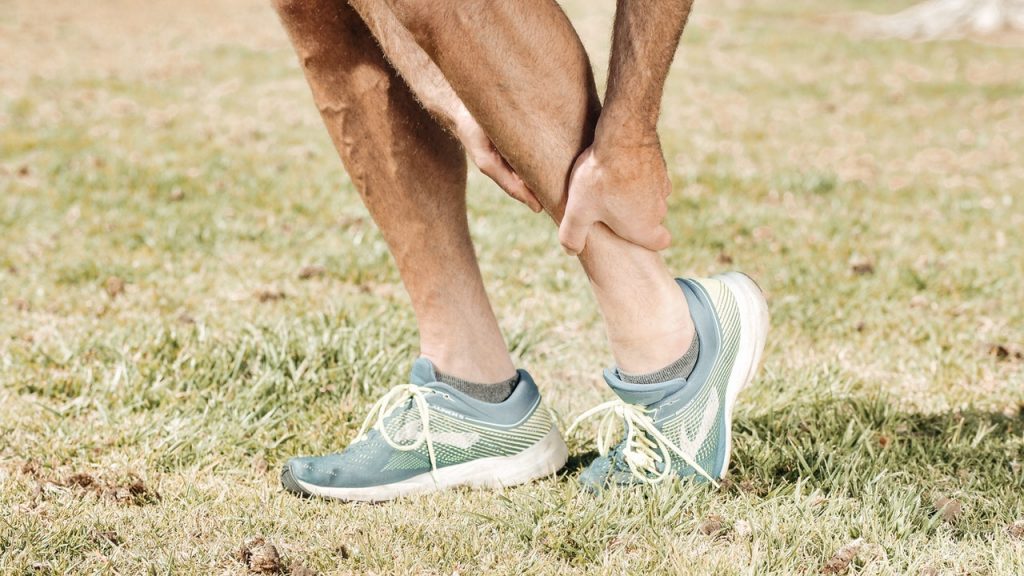Photo by Kindel Media from Pexels
Shoe shopping can be a challenging experience. Buying footwear can get even more complicated when you have a medical condition. The wrong shoes not only exacerbate your disorder but can also cause injury. It’s important to find the right footwear so you can stay comfortable, safe, and healthy.
Proper shoes fit well, suit the specific activity, and are designed for your foot problem. Good shoes can support your feet, protect you from harm, and improve your quality of life. So, how can you buy the perfect shoes? Follow these tips to find the best shoes for you.
Consult With a Podiatrist
If you’re like other people, you probably turn to insoles to relieve foot pain. While shoe inserts can bring you some relief, they can’t correct the cause of your aches. You need orthopedic shoes that are specially constructed for your condition to improve comfort and mobility. How can you determine which therapeutic shoe works best for you? Consult with a podiatrist.
A podiatrist will use x-rays, CT scans, and other methods to diagnose the underlying cause of your foot problem. After identifying what is triggering your discomfort, they can recommend the right footwear to address your concern. Podiatrist-recommended shoes improve your gait, support foot mechanics, and reduce stress on your joints to help you walk more comfortably.
Do Your Research
Seeing a podiatrist is necessary to diagnose your problem and get footwear recommendations. But you shouldn’t rely on your doctor alone to manage your condition. Taking a more active role in your healthcare is key to helping you live your best life. To buy the right footwear, do your research to learn which shoe designs and materials are best for your foot condition.
A simple Google query like, “what to look for in [insert foot condition] shoes,” can give you plenty of information about shoe features to keep an eye on. If this seems daunting to you, there is an easier way to go about it. Some online shoe stores offer an orthopedic shoe finder to make your search less tedious. With these tools, you can find the right shoes for your condition in minutes.
Know Your Size
We all know our shoe size, right? Apparently not! According to a study conducted by the College of Podiatry, one-third of men and almost half of women wear ill-fitting shoes. Shoes that don’t fit properly are not only uncomfortable but can also deform your feet and make your foot condition even worse.
Most people stop measuring their feet at age 20, but your feet change shape and size as you get older. You should have your feet professionally measured once or twice a year to ensure a good shoe fit. If visiting a shoe store for a professional measurement is inconvenient for you, follow these steps to find your accurate shoe size at home.
- Take out a piece of paper that is larger than your foot.
- Tape the paper on the floor, with one end against the wall.
- Depending on how you’ll wear the shoe, place your naked or socked foot onto the piece of paper, with your heel against the wall.
- Use a writing utensil to trace the outline of your foot.
- With a ruler, measure the longest part of your outline.
- Record the length in both inches and centimeters.
- Use this length to determine your true shoe size.
Measure Foot Width
Photo by Andrea Piacquadio from Pexels
Now you know your correct shoe size. Congratulations! But foot length alone does not guarantee a perfect shoe fit. Shoe width matters as much as size when it comes to finding the right footwear. Shoes that are too tight or broad can cause blisters, bunions, and other foot problems. Your shoes must be the correct width to keep your feet comfortable and healthy.
After learning about your foot size, it’s time to find your foot width. There are two ways you can do this at home. If you have the outline of your foot, measure its widest part (the area across the ball of your foot) and note the number. You can also place your foot on a ruler or tape measure to find its width. Once you have the measurement, use a shoe width chart to find your perfect fit.
Get the Proper Style
You probably know someone who goes out for walks in flip-flops. Or maybe you even do it yourself. Footwear is manufactured in different styles ⏤ and for a good reason. Your feet need varying levels of support for performing different activities. Sandals can’t protect your feet, joints, and ankles the way athletic shoes can.
If you wear shoes that are not designed for your activity, you expose yourself to a higher risk of injury. Therefore, when shopping for footwear, buy one that is constructed for your particular activity. Like regular shoes, orthopedic shoes come in a wide range of styles. Keep different types of therapeutic footwear on hand to enjoy an active lifestyle and keep yourself safe.
Move in the Shoe
Selecting the proper size and style is crucial to finding the right shoe. But without testing the shoe in action, you can’t know if it’s comfortable for your foot disorder. Each manufacturer uses its own shoe lasts (foot models) to develop its footwear. Because shoe last designs vary from brand to brand, you could be a size eight in one brand, and a size nine in another.
This is why you should try on and test shoes before buying them. When shopping online, check the store’s return policy to make sure they offer a risk-free trial period. Once you get access to the shoes, take the time to move around in them to ensure that they’re enjoyable to wear. If the shoes feel like they need to be broken in, look for a different fit or model.
Replace Worn Out Footwear
Shoes are not meant to be worn forever. Shoe soles and heels break down with repeated use, reducing their ability to provide support over time. Wearing old footwear increases pressure on your feet, ankles, lower leg, hip, and spine, which can aggravate your medical condition. You must replace your shoes often to prevent musculoskeletal damage and maintain healthy limbs.
How often should you replace your shoes? As a general rule of thumb, you should replace casual shoes every 8-12 months and toss your athletic shoes after 300-500 miles of use. Depending on footwear quality, some shoes can last longer or wear out more quickly than the standard replacement time. Look for these signs to determine if you need new shoes.
- The shoes’ cushioning doesn’t bounce back like it used to.
- The outsole is excessively worn down in one area.
- The midsole is wrinkled or compressed.
- The shoe’s heel is worn out unevenly.
Good Shoes Are Key to Better Health
Your feet are the foundation of your body. They provide balance and support physical activity, which is necessary for your wellbeing. Because they’re exposed to a lot of force, your feet are vulnerable to developing many disorders. The right shoes can relieve pressure off your feet to help you stay mobile. Invest in proper shoes so you can live an active and healthy lifestyle.

